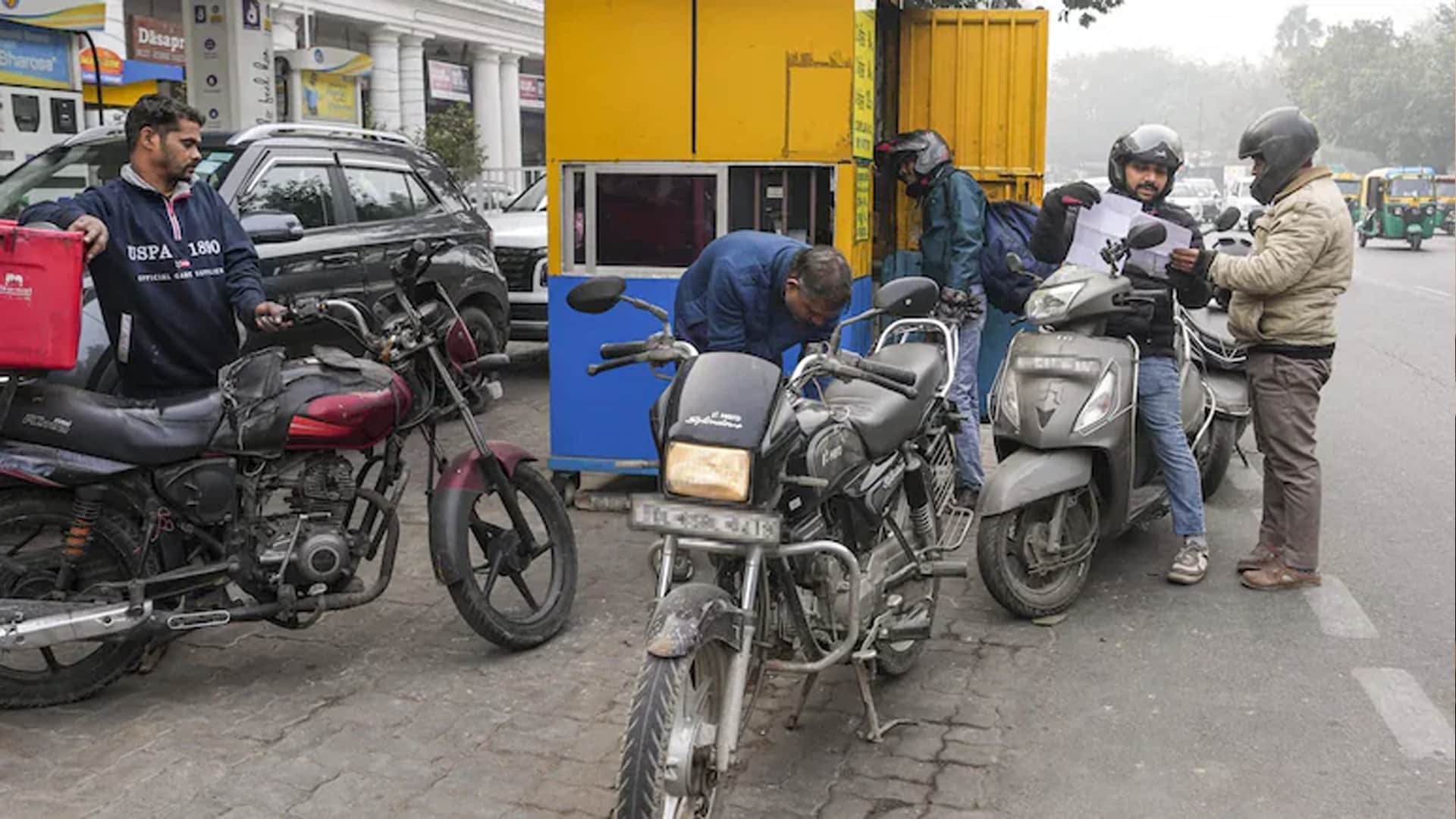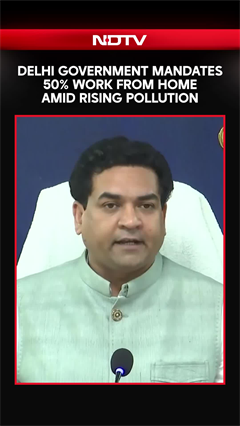- Home/
- Iceland's 'Mammoth' Carbon Capture Plant: What It Means For Climate Crisis
Iceland's 'Mammoth' Carbon Capture Plant: What It Means For Climate Crisis

A groundbreaking climate initiative is underway in Iceland with the launch of Mammoth, the world's largest plant designed to function like a giant vacuum, removing planet-heating pollution from the atmosphere. The facility is ten times the size of its predecessor, Orca, which began operations in 2021. Both projects were developed by the Swiss company Climeworks, CNN reported.
Direct air capture (DAC), the technology behind Mammoth, uses chemicals to extract carbon from the air. The captured carbon can then be stored underground, converted into solid forms, or used in various products. Climeworks has partnered with Icelandic firm Carbfix for the underground sequestration process, where carbon is injected into volcanic rock and slowly transformed into stone, effectively locking it away permanently.
The plant operates entirely on clean geothermal energy sourced from Iceland's abundant natural resources, a key factor in reducing the carbon footprint. This approach to carbon capture has gained increased attention as global CO2 levels reached record highs in 2023.
The plant is an “important step in the fight against climate change,” said Stuart Haszeldine, a professor of carbon capture and storage at the University of Edinburgh. While Haszeldine acknowledged the importance of the development, he emphasised the plant's current output represents only a small fraction of what is necessary to meet global climate targets.
At full capacity, Mammoth is expected to remove 36,000 tons of carbon annually — equivalent to taking around 7,800 gas-powered cars off the road for a year. However, Climeworks has made it clear that the cost of capturing carbon is still high, with estimates placing the cost per ton closer to $1,000 than the $100 threshold that would make the technology economically viable at scale. The company has ambitious plans to reduce this cost over time, with the goal of reaching $300 to $350 per ton by 2030 and $100 per ton by 2050.
Despite the advancements made with Mammoth, experts caution that current efforts in carbon removal fall far short of what is needed. According to the International Energy Agency, global carbon capture systems can currently remove only about 0.01 million metric tons of carbon annually, a small fraction of the 70 million tons required by 2030 to meet climate goals.
While other companies, such as Occidental in Texas, are working on even larger DAC plants, there is concern that such technologies could potentially be used to support fossil fuel extraction. Critics point out that Occidental plans to store captured carbon deep underground but also intends to use some of it in a process known as enhanced oil recovery, which pushes carbon into oil wells to extract more oil.
But Climeworks emphasises its focus is solely on reducing atmospheric carbon, rather than engaging in fossil fuel extraction.
The company has ambitious goals. Co-founder and co-CEO Jan Wurzbacher said that Climeworks aims to capture one million tons of carbon each year by 2030 and scale it up to one billion tons annually by 2050. To reach these targets, Climeworks is planning to expand its operations with new plants in Kenya and the US.
also read
3,746 Challaned, 61,000 PUCs Issued On Day 1 Of 'No PUC, No Fuel' In Delhi
Reported by Ishika VermaConstruction, Traffic, Forest Fires: What's Driving AQI Spike In Uttarakhand
Reported by Kishor Rawat, Edited by Srishti KapoorDelhi Air Quality Worsens Despite Stricter Anti-Pollution Measures
Press Trust of India
Latest Stories
- Friday December 19, 2025
After the fourth T20I between India and South Africa in Lucknow was abandoned due to 'excessive fog', concerns regarding Air Quality Index (AQI) has been raised ahead of the fifth T20I in Ahmedabad.
- Reported by Ishika Verma | Thursday December 18, 2025 , New Delhi
Delhi's 'No PUC, No Fuel' directive came into force across the national capital on Thursday amid claims of strict enforcement
- Reported by Kishor Rawat, Edited by Srishti Kapoor | Thursday December 18, 2025 , Dehradun
The air quality in many cities of Uttarakhand, often seen as a refuge by those looking to briefly escape the poor to severe AQI in Delhi-NCR and surrounding regions, has seen a dip in the past week.
- Press Trust of India | Friday December 19, 2025 , New Delhi
Delhi Air Pollution, No PUC No Fuel: Delhi Traffic Police and Transport Department challans 3,746 vehicles and turns back 568 non-compliant entries in 24 hours, enforcing pollution norms strictly.
- Press Trust of India | Thursday December 18, 2025 , New Delhi
A blanket of haze enveloped Delhi on Thursday, reducing visibility across the city as air pollution worsened, with the 24-hour average AQI in the 'very poor' category with a reading of 373, up from 334 a day earlier, according to official data.
................................ Advertisement ................................
Latest Videos
Opinion
Blog | Well Done, Delhi. You've Turned Lung Sacrifice Into A Badge Of HonourSaikat Kumar Bose
Monday November 10, 2025Till some years back, Delhiites would ask angry questions to those in power about the capitals annual tryst with toxic air. This has changed. Those in the driving seat dont see the need to answer now.
Opinion | Why Indians Have Just Given Up On Air Pollution CrisisTanushree Ganguly
Friday December 20, 2024While some may argue that people in Delhi are now more aware of air pollution than they were a decade back, my rebuttal would be that awareness does not mean that people are concerned.
Opinion | You Must Outrage Over Filthy Air More Than Once A YearJyoti Pande Lavakare
Tuesday December 10, 2024Delhi welcomed us with monsoon rains and mangos. We were home. Fast forward a couple of years, in the winter of 2012, I found myself in denial about something other parents, mostly expats, were calling toxic air.
Opinion | Delhi's Air Pollution Situation Is Like A Bad MarriageNishtha Gautam
Friday November 22, 2024On a good day, such as today, the AQI reading in Delhi is 407. We are jubilant at the sickly sunshine trickling through the slightly dissipated smog. At least its not 1600.
दिवाली... पराली... सियासी जुगाली!Ashwini kumar
Monday November 18, 2024दिल्ली-एनसीआर में प्रदूषण का समाधान तो आज तक मिला नहीं. हर साल चिंतित होकर हम-आप सांसों की तकलीफ के साथ-साथ दिल और ब्लड प्रेशर के मरीज भी क्यों बनें?


















